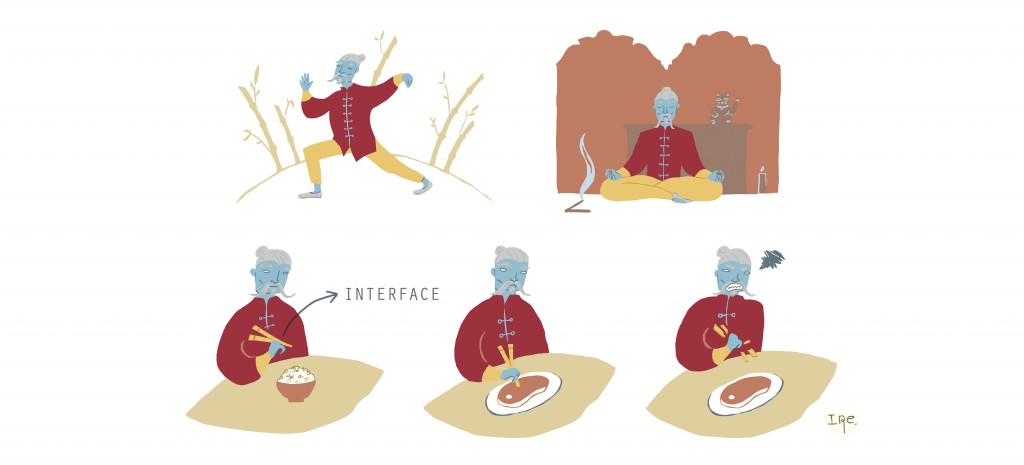#EDCD en Medialab: “La interfaz es política, el diseño es subjetivo y el usuario lo ignora”
Este artículo contiene información sobre la conferencia que se dio en MediaLab Prado el día 5/3/2015 en el marco de las jornadas #EDCD (Encuentro de Diseño y Cultura Digital).
Enlace a la pagina de MediaLab Prado
Vídeo de la charla (enlace al video en la web de Medialab Prado)
Enlace a la web oficial de #EDCD
Aquí el podcast de Siglo21 de Radio3 donde Quelic Berga comenta sobre la interfaz a partir del minuto 37:
Apuntes y enlaces:
Crítica de la interfaz:
Pold Soren
Paper de Pold Soren sobre como afecta a condiciona a la escritura la metáfora de “oficina” usada en microsoft office y sus parecidos.
Femke
Considering your tools
http://reader.lgru.net/pages/index/
Marshall McLuhan
Libro que analiza el impacto del medio por encima del mensaje.
George Lakoff & Mark Johnson
El libro “Metaphors We Live By” explica el poder de las metáforas.
Y aquí un ejemplo de una metáfora visual para organizar la información
Introducing Facebook Timeline
Metáforas de productividad són muy comunes en google, facebook y otras plataformas que siguen el mismo modelo.
Apple anunciando porque 1984 no sera como 1984
El Diseño es emocional y subjetivo
Donald Norman
Libro que explica la importancia de lo emocional en un buen diseño.
http://www.amazon.com/Emotional-Design-Love-Everyday-Things/dp/0465051367
Hugo Roy -> Terms and conditions Didn’t Read
Plugin para Firefox para recibir información simplificada sobre los T&C de las webs visitadas.
Entrevista a Hugo Roy
http://mosaic.uoc.edu/2014/07/31/entrevista-a-hugo-roy/
Paper de Facebook sobre un experimento a 70000 usuarios
Experimental evidence of massive-scale emotional contagion through social networks
http://www.pnas.org/content/111/24/8788.full
Y una notícia del pais sobre el tema:
http://elpais.com/elpais/2014/06/30/icon/1404123574_764889.html
Proyectos Artisticos:
Benjamin Grosser – Facebook Demetricator
http://bengrosser.com/projects/facebook-demetricator/
Paper sobre el proyecto de Benjamin Grosser, Facebook Demetricator
http://computationalculture.net/article/what-do-metrics-want
Y vídeo explicativo del plugin
Que podemos hacer?
Apoyar iniciativas que respetan las libertades del usuario y la diversidad:
https://en.wikipedia.org/wiki/Free_Software_Foundation_Europe
Usar herramientas y apoyar herramientas que sean más coherentes con nuestra visión cultural. Por ejemplo el buscador DuckDuckGo, similar a Google, pero que no guarda ningún dato tuyo:
La fundación Mozilla esta trabajando para crear proyectos mejores para todos y aquí su manifiesto:
https://www.mozilla.org/en-US/about/manifesto/
Compartir nuestras dudas y visiones, aunque parezcan distintas de las de la mayoría puede que muchas personas piensen igual que tu en ciertos aspectos.
Bibliografía del proyecto
Puedes encontrar más en el menú de Bibliografía.


